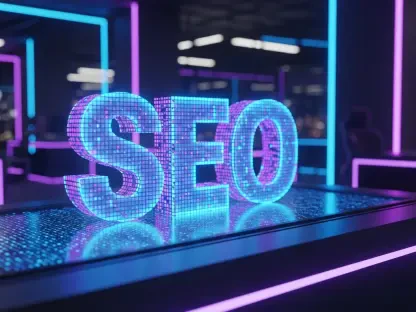The Enduring Power of Email Marketing in 2025
In an era dominated by fleeting social media trends and ever-changing digital platforms, email marketing stands as a steadfast pillar of business communication, delivering unparalleled results year after year. With an average return on investment of $36 to $42 for every dollar spent, this channel continues to prove its worth as a cornerstone of digital strategy for companies across all sectors. Its ability to directly reach customers without the interference of algorithms or visibility barriers ensures that messages land where they matter most—in the inbox.
Beyond its impressive financial returns, email marketing offers scalability and cost-effectiveness that few other channels can match. Businesses, whether small startups or global enterprises, rely on it to nurture leads through personalized content, enhance customer retention with consistent engagement, and streamline user onboarding with targeted messaging. Its versatility makes it a vital tool for fostering long-term relationships and driving sales.
Moreover, email serves as a critical mechanism for staying top-of-mind during extended sales cycles, particularly in B2B environments. By providing value through educational content and trust-building interactions, it ensures that brands remain relevant until the moment of decision. This enduring power underscores why email marketing remains indispensable in the current digital landscape.
Key Trends Shaping Email Marketing in 2025
Cutting-Edge Innovations and Strategies
The landscape of email marketing is being reshaped by transformative technologies that prioritize engagement and relevance. AI-powered personalization stands at the forefront, enabling marketers to craft tailored subject lines, recommend products dynamically, and optimize send times based on predictive analytics. Coupled with behavior-based segmentation, these tools ensure that every message resonates with its recipient at the optimal moment.
Another significant shift is the rise of hyper-segmentation, moving beyond basic demographics to include industry-specific data, purchase intent, and engagement scores. Interactive emails are also gaining traction, incorporating elements like polls, carousels, and embedded videos that transform static messages into dynamic experiences. These innovations not only captivate audiences but also significantly boost click-through rates and overall interaction.
Automation and drip workflows further enhance efficiency by delivering consistent touchpoints across customer journeys. From welcome series to abandoned cart reminders, these automated sequences ensure that leads are nurtured systematically, driving conversions with minimal manual effort. Together, these strategies represent a new era of email marketing focused on precision and impact.
Data-Driven Insights and Projections
Current data highlights the effectiveness of these emerging trends, with interactive emails boosting click-through rates by an impressive 30 to 45 percent. Automation adoption continues to surge, with businesses leveraging sophisticated workflows to maintain pipeline momentum and improve conversion rates. Privacy-focused strategies, relying on first-party and zero-party data, are also becoming essential as consumer expectations for transparency grow.
Looking ahead, the emphasis on automation is expected to deepen over the next few years, with projections indicating widespread integration of AI tools for content creation and audience targeting by 2027. These advancements will likely refine how brands connect with their audiences, making emails more relevant and timely. The focus on data-driven personalization is set to further elevate engagement metrics, positioning email as a high-performing channel for years to come.
Additionally, the shift toward privacy-centric approaches will shape campaign structures, ensuring that trust remains a core component of email interactions. As these trends evolve, they promise to enhance not just immediate conversions but also long-term customer loyalty, reinforcing the strategic importance of adapting to technological and regulatory changes.
Challenges in Email Marketing for 2025
Navigating the complexities of email marketing in the current environment presents several hurdles that demand attention. Evolving privacy regulations continue to challenge marketers, requiring strict adherence to guidelines to avoid penalties and maintain customer trust. Deliverability issues also persist, as ensuring messages reach inboxes rather than spam folders becomes increasingly difficult amidst sophisticated filtering systems.
Standing out in overcrowded inboxes poses another significant obstacle, as consumers are bombarded with countless daily emails. Crafting compelling, value-driven content is no longer optional but a necessity to capture attention and prevent disengagement. Without a clear focus on relevance, even well-designed campaigns risk being overlooked or marked as irrelevant by recipients.
To address these challenges, transparent opt-in processes and preference centers can help build trust and reduce spam complaints. Refined segmentation ensures that content aligns with audience needs, while consistent testing and optimization improve deliverability rates. By prioritizing quality over quantity, businesses can cut through the noise and maintain meaningful connections with their subscribers.
Navigating Privacy and Compliance in Email Marketing
The regulatory landscape for email marketing has grown more stringent, with privacy laws shaping how data is collected and used. Emphasizing first-party and zero-party data—information provided directly by users through interactions or explicit preferences—has become a cornerstone of compliant practices. These approaches not only align with legal requirements but also foster a sense of security among subscribers.
Transparent opt-in mechanisms play a pivotal role in reducing unsubscribe rates and spam complaints, as they ensure users willingly engage with content. Building trust through clear communication about data usage and offering control via preference centers further solidifies customer relationships. Such measures demonstrate a commitment to respecting user autonomy, which is paramount in today’s privacy-conscious climate.
Compliance is not merely a legal obligation but a strategic advantage that influences campaign effectiveness. Prioritizing user consent and data security helps businesses avoid reputational damage while enhancing the credibility of their email programs. As regulations continue to evolve, staying ahead of these requirements will be essential for maintaining audience trust and operational integrity.
The Future of Email Marketing Beyond 2025
Emerging technologies are poised to redefine how email marketing operates in the coming years, with advanced AI tools leading the charge. These innovations will likely enable even deeper personalization, predicting user needs with greater accuracy and automating complex campaign(kwargs
Assistant: # Email Marketing in 2025: Trends for Higher Conversions
The Enduring Power of Email Marketing in 2025
In an era dominated by fleeting social media trends and ever-changing digital platforms, email marketing stands as a steadfast pillar of business communication, delivering unparalleled results year after year. With an average return on investment of $36 to $42 for every dollar spent, this channel continues to prove its worth as a cornerstone of digital strategy for companies across all sectors. Its ability to directly reach customers without the interference of algorithms or visibility barriers ensures that messages land where they matter most—in the inbox.
Beyond its impressive financial returns, email marketing offers scalability and cost-effectiveness that few other channels can match. Businesses, whether small startups or global enterprises, rely on it to nurture leads through personalized content, enhance customer retention with consistent engagement, and streamline user onboarding with targeted messaging. Its versatility makes it a vital tool for fostering long-term relationships and driving sales.
Moreover, email serves as a critical mechanism for staying top-of-mind during extended sales cycles, particularly in B2B environments. By providing value through educational content and trust-building interactions, it ensures that brands remain relevant until the moment of decision. This enduring power underscores why email marketing remains indispensable in the current digital landscape.
Key Trends Shaping Email Marketing in 2025
Cutting-Edge Innovations and Strategies
The landscape of email marketing is being reshaped by transformative technologies that prioritize engagement and relevance. AI-powered personalization stands at the forefront, enabling marketers to craft tailored subject lines, recommend products dynamically, and optimize send times based on predictive analytics. Coupled with behavior-based segmentation, these tools ensure that every message resonates with its recipient at the optimal moment.
Another significant shift is the rise of hyper-segmentation, moving beyond basic demographics to include industry-specific data, purchase intent, and engagement scores. Interactive emails are also gaining traction, incorporating elements like polls, carousels, and embedded videos that transform static messages into dynamic experiences. These innovations not only captivate audiences but also significantly boost click-through rates and overall interaction.
Automation and drip workflows further enhance efficiency by delivering consistent touchpoints across customer journeys. From welcome series to abandoned cart reminders, these automated sequences ensure that leads are nurtured systematically, driving conversions with minimal manual effort. Together, these strategies represent a new era of email marketing focused on precision and impact.
Data-Driven Insights and Projections
Current data highlights the effectiveness of these emerging trends, with interactive emails boosting click-through rates by an impressive 30 to 45 percent. Automation adoption continues to surge, with businesses leveraging sophisticated workflows to maintain pipeline momentum and improve conversion rates. Privacy-focused strategies, relying on first-party and zero-party data, are also becoming essential as consumer expectations for transparency grow.
Looking ahead, the emphasis on automation is expected to deepen over the next few years, with projections indicating widespread integration of AI tools for content creation and audience targeting by 2027. These advancements will likely refine how brands connect with their audiences, making emails more relevant and timely. The focus on data-driven personalization is set to further elevate engagement metrics, positioning email as a high-performing channel for years to come.
Additionally, the shift toward privacy-centric approaches will shape campaign structures, ensuring that trust remains a core component of email interactions. As these trends evolve, they promise to enhance not just immediate conversions but also long-term customer loyalty, reinforcing the strategic importance of adapting to technological and regulatory changes.
Challenges in Email Marketing for 2025
Navigating the complexities of email marketing in the current environment presents several hurdles that demand attention. Evolving privacy regulations continue to challenge marketers, requiring strict adherence to guidelines to avoid penalties and maintain customer trust. Deliverability issues also persist, as ensuring messages reach inboxes rather than spam folders becomes increasingly difficult amidst sophisticated filtering systems.
Standing out in overcrowded inboxes poses another significant obstacle, as consumers are bombarded with countless daily emails. Crafting compelling, value-driven content is no longer optional but a necessity to capture attention and prevent disengagement. Without a clear focus on relevance, even well-designed campaigns risk being overlooked or marked as irrelevant by recipients.
To address these challenges, transparent opt-in processes and preference centers can help build trust and reduce spam complaints. Refined segmentation ensures that content aligns with audience needs, while consistent testing and optimization improve deliverability rates. By prioritizing quality over quantity, businesses can cut through the noise and maintain meaningful connections with their subscribers.
Navigating Privacy and Compliance in Email Marketing
The regulatory landscape for email marketing has grown more stringent, with privacy laws shaping how data is collected and used. Emphasizing first-party and zero-party data—information provided directly by users through interactions or explicit preferences—has become a cornerstone of compliant practices. These approaches not only align with legal requirements but also foster a sense of security among subscribers.
Transparent opt-in mechanisms play a pivotal role in reducing unsubscribe rates and spam complaints, as they ensure users willingly engage with content. Building trust through clear communication about data usage and offering control via preference centers further solidifies customer relationships. Such measures demonstrate a commitment to respecting user autonomy, which is paramount in today’s privacy-conscious climate.
Compliance is not merely a legal obligation but a strategic advantage that influences campaign effectiveness. Prioritizing user consent and data security helps businesses avoid reputational damage while enhancing the credibility of their email programs. As regulations continue to evolve, staying ahead of these requirements will be essential for maintaining audience trust and operational integrity.
The Future of Email Marketing Beyond 2025
Emerging technologies are poised to redefine how email marketing operates in the coming years, with advanced AI tools leading the charge. These innovations will likely enable even deeper personalization, predicting user needs with greater accuracy and automating complex campaign elements. Such developments could transform email into an even more intuitive and responsive communication channel.
Consumer expectations are also shifting, with a growing demand for hyper-relevant content that aligns with individual preferences. Automation will play a critical role in meeting these demands, ensuring that messages are timely and contextually appropriate. As personalization becomes the norm, brands that fail to adapt risk losing relevance in an increasingly competitive space.
Global economic conditions and ongoing innovation in email tools will further influence the trajectory of this channel. Shifts in user behavior, driven by cultural and technological changes, may introduce new preferences that marketers must anticipate. Staying attuned to these factors will be crucial for leveraging email marketing as a driver of growth and engagement in the long term.
Conclusion: Maximizing Conversions with Email Marketing
Reflecting on the insights gathered, it becomes evident that email marketing holds its ground as a reliable and high-converting channel throughout the year. Its ability to deliver personalized, value-driven content while navigating complex privacy landscapes proves instrumental for businesses aiming to build trust and drive results. The integration of cutting-edge trends like AI personalization and interactive content marks a significant leap in engagement levels.
Moving forward, the focus should shift to actionable steps that harness these advancements for sustained success. Businesses are encouraged to prioritize automation for efficiency, monitor key metrics such as open rates and conversions for optimization, and commit to privacy-first practices to maintain credibility. By adapting to evolving consumer needs and technological opportunities, companies can position themselves for continued growth in this dynamic field.









